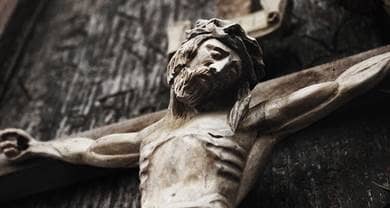- Trending:
- Pope Leo Xiv
- |
- Israel
- |
- Trump
- |
- Social Justice
- |
- Peace
- |
- Love

RELIGION LIBRARY
Roman Catholicism
Early Developments
Starting from Jesus' own Jewish heritage, Christianity established a distinct entity within a few decades after his public life, crucifixion, and resurrection. Christianity drew on this Jewish heritage as well as the structures of the Roman Empire and the Hellenistic Greek philosophy prevailing in the Middle East at the time.
The new faith began to spread from Jewish synagogues to Roman provincial sites, often through open-air preaching by Jesus' first apostles and then their successors who were successively handing down the faith. As early as 40 C.E., after just a decade had passed since Jesus' ministry, the phrase Christianoi (followers of Christ) was heard in Antioch. Before long, an archipelago of churches--that is, communities of Christians bound closely to each other in one location but fairly loosely from one place to another--had developed along the Mediterranean basin. The spread of Christianity was an urban phenomenon that traveled along Roman roads and flourished in Roman population centers. By early in the 2nd century, a local leader named Ignatius could use the word catholicity (from Greek katholikos, universal) to describe how Christianity was already found in the universal Roman world as defined at that time.
We call this early period the apostolic age, when Jesus' first disciples (students), now apostles (teachers) in their own right, preached the good news of salvation. This is the age described in the New Testament and represents the century during which gospels, epistles, and other books comprising Christian scripture were composed. A sub-apostolic ("after the apostolic") age followed that, in turn, led to an expanding circuit of churches not only in Roman provincial cities in the Mediterranean area, but also moving inland and northward into Europe. As it spread west and north, Christianity developed a strong Latin basis and began to be separated from its eastern, Greek roots. This led to some linguistic difficulties in describing complex theological concepts--such as Jesus' humanity and divinity, his place in the Trinity, and Mary's position as mother of the human Jesus and the Son of God--in ways that were commonly accessible.
In the next few centuries, the new faith was a persecuted, illegal, and often necessarily underground religion. Roman officials considered Christians to be atheists because they didn't worship Greco-Roman gods, and subversive traitors, because Roman religion was closely tied to support of the state. Persecution, however, was not constant but came in waves. Nero, for instance, blamed Christians for the huge Roman fire that he himself may have instigated in 64 C.E. Both Peter and Paul were killed in the city-wide persecution in the four years that followed, which included Christians being tied to posts and burned alive to provide light for Nero as he strolled through his gardens. Still, relative toleration ensued: in the early 2nd century, the emperor Trajan instructed a provincial governor named Pliny the Younger that Christians were not to be hunted out and could be tried only with direct and open evidence.
By the late 2nd century, Christianity had spread rapidly and particularly among women, slaves, and artisans--the lower and less privileged segments of the Roman population. Each time Rome imperial control waned, largely because of poor economic conditions, leadership, or military danger, Christians were often scapegoated as atheists. In 201, Rome declared converting to Christianity or Judaism to be a capital offense.
There were empire-wide, systematic persecutions in the middle of the 3rd century under the emperors Decius and Valerius. Emperor Diocletian ordered what was the worst and largest persecution, in 303-305, when Christianity stood nearly on the brink. Diocletian hunted out and dismissed clandestine Christians in imperial service, confiscated liturgical objects, burned scriptures, and leveled meeting places.
It was at this point that Constantine, moving toward total domination, gained the victory at the Battle of the Milvian Bridge in 312 and attributed it to Jesus. The next year, his Edict of Milan permitted Christianity to be tolerated and even favored among other religions. Constantine endowed the Church with property, buildings, and perhaps land, a step toward an imperial Church that looked increasingly Roman in style and administration-a development with both advantages as well as disadvantages. In 380, Theodosius finally declared Christianity to be the one and only religion permitted in the Roman Empire, turning the tables by declaring all other religions, including the Greco-Roman system that had been the norm for a millennium, to be pagan, atheistic, illegal, and traitorous.
Study Questions:
1. How was Christianity originally spread?
2. What events occurred during the apostolic age? The sub-apostolic age?
3. Why were Christians persecuted (during Christianity’s infancy)?
4. How did political opinions of Christianity evolve over the 3rd and 4th centuries?










